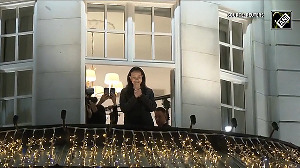Excise exemptions may be whittled in Budget to offset higher govt salaries, pensions
 The government might consider pruning the list of around 300 goods exempt from excise duty in the Budget to make up for the extra expenditure on account of higher government salaries and defence pensions in the next financial year.
The government might consider pruning the list of around 300 goods exempt from excise duty in the Budget to make up for the extra expenditure on account of higher government salaries and defence pensions in the next financial year.
The Seventh Pay Commission’s recommendation of a 23.55 per cent increase in pay and allowances of government employees from January 1, will need an estimated Rs 1.02 lakh crore extra expenditure. The Centre plans to bring down its fiscal deficit to 3.5 per cent of gross domestic product in 2016-17, from the 3.9 per cent target this financial year.
The move will also align central taxation to the proposed goods and services tax (GST). The pruning of the central excise list of 300 exempted items will bring it closer to the 90 goods exempted by state value-added tax. While the list is going to be slashed to 90 under the proposed GST, it might be pruned somewhat close to that in the next Budget.
“The idea is to do away with or phase out tax exemptions. This will not only broaden the tax base but also clean up the taxation structure. We are examining if some excise exemptions can be done away with in preparation of GST,” said a government official.
According to estimates, reducing the list from 300 to 90 could add Rs 50,000-60,000 crore (Rs 500-600 billion) in tax revenue. The list of exempted goods has shrunk from 470 items in 2011-12 to 300 now. Biscuits, honey, butter, cheese, tea, coffee and rusk are among the goods exempted by the Centre from excise duty, but are charged a levy by the states. States exempt unprocessed goods and those consumed by the poor like fruit, vegetables, salt, grain and coarse fabric.
Chief Economic Advisor Arvind Subramanian recently argued that extensive central excise exemptions amounted to about Rs 1.8 lakh crore, or 80 per cent of excise duty collections.
“Given the historic opportunity afforded by the GST, the aim should be to clean up the Indian tax system that has effectively become an ‘exemptions raj’ with serious consequences for revenue and governance,” a report prepared by Subramanian said.
It called for the list of exemptions to be restricted to a few merit goods such as food that featured prominently in the consumption basket of the poor.
“If the GST is not happening, pruning central excise exemptions will be a prudent revenue-raising option. Reducing the list from 300 to 90 could add Rs 50,000-60,000 crore in tax revenue,” said Satya Poddar, senior tax advisor, EY.
“Bringing the list to a bare minimum and aligning it to the GST model will be a great revenue source for the government,” said Gautam Khattar of PwC. “Besides, the government could look at demerit items such as tobacco and aerated drinks to hike duty in the Budget,” he added.
Rajiv Dimri, leader, indirect tax, BMR Advisors, said the process of reducing excise duty exemptions had been on for a while and a further pruning would be a great measure to raise revenue.
In 2011-12, the then finance minister Pranab Mukherjee had proposed to limit duty exemptions to 130 items, including certain kinds of animal fats, toothpowder, soups and candles.
“What was done in 2011-12 was cosmetic and many of the proposals were withdrawn. It did not result in much revenue gain for the Centre,” said Poddar.
"The focus will definitely be on curtailment on central excise exemptions as we can note from the trend since 2011-12, where duties were introduced on certain exempted items and hiked thereafter," said Saloni Roy, senior partner, Deloitte.
The government is also working on reducing the negative list of 17 services for taxation under the GST. Only essential services like health and education are likely to be exempted.
Shrink to fit
2004-05: Removal of exemption from CVD enjoyed by some imported goods, where there is no corresponding exemption from excise duty on Indian-made goods
2007-08: Exemption limit for small-scale industry raised from Rs 1 crore to Rs 1.5 crore
2008-09: Anti-AIDS drug Atazanavir, as well as bulk drugs for its manufacture, exempted from excise duty
2009-10: Excise duty rate on items attracting 4% raised to 8%, with some exemptions
2010-11: Full exemption from excise duty to trailers, semi-trailers used in farming
2011-12: Excise duty exemptions on 130 items out of 470 with a concessional duty, mainly consumer items, withdrawn
2012-13: Standard rate of excise duty raised from 10% to 12%; imposed on unbranded jewellery
2014-15
Interim Budget
i) Excise duty on capital goods and consumer non-durables reduced from 12% to 10% up to June 30
ii) Excise duty on small cars, motorcycles, scooters and commercial vehicles cut from 12% to 8% and SUVs from 30% to 24%
iii) Excise duty on large cars decreased from 27% to 24% and on mid-segment cars from 24% to 20%
2014-15
Regular Budget
Concessions given in interim Budget extended till December 31, 2014
January 1, 2015:
Concessions withdrawn
Source: Budget documents











